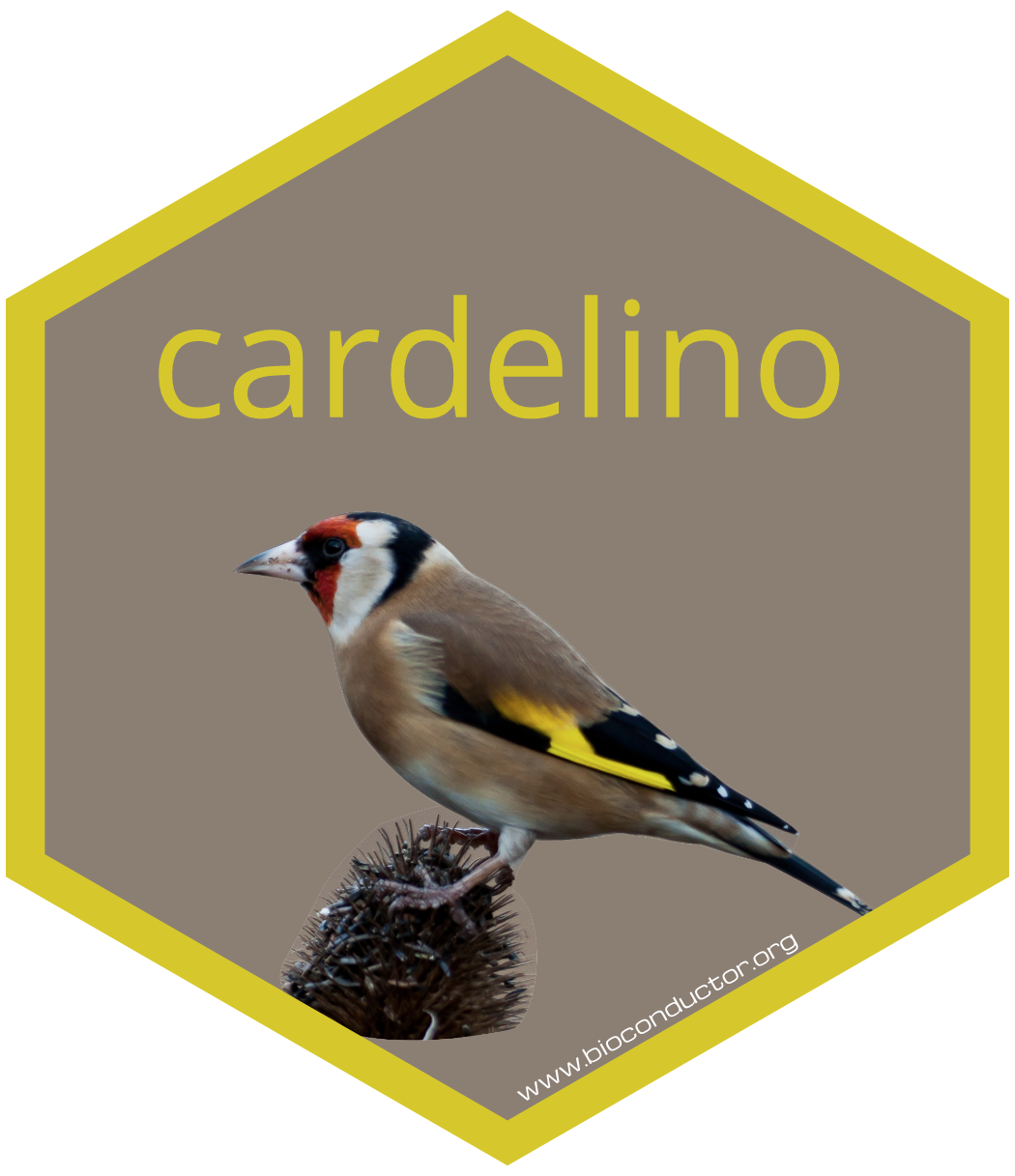This R package contains a Bayesian method to infer clonal structure for a population of cells using single-cell RNA-seq data (and possibly other data modalities).
The latest cardelino package can be conveniently installed using the
devtools package thus:
devtools::install_github("single-cell-genetics/cardelino", build_vignettes = FALSE)
For situations in which installing software is a challenge (for example, on
institutional HPC clusters or on cloud computing platforms), we provide a
pre-built Docker image on
DockerHub. This image contains R version 3.5.0 with
cardelino and other packages (e.g. tidyverse, basic Bioconductor and other
single-cell RNA-seq packages) installed and ready to use with
Docker or Singularity.
For example, to build a Singularity image that can be used on an HPC cluster (with Singularity installed) one simply pulls the image from DockerHub:
singularity build rsc.img docker://davismcc/r-singlecell-img
This builds a Singularity image called rsc.img in the current working
directory. We can then run R from the container and use the installed version
of cardelino:
singularity exec rsc.img R
Equivalent commands enable running R from the container with Docker.
The best place to start are the vignettes. From inside an R session, load
cardelino and then browse the vignettes:
library(cardelino)
browseVignettes("cardelino")
Vignettes for clone identification use cases are provided.
Accessing the vignettes from within your R session is recommended, but you can also view the clone ID vignette.
The denor demultiplex function, namely Vireo, was supported in this R package before, but now has been re-implemented in Python, which is more memory efficient and easier to run via a command line. We, therefore, highly recommend you switch to the Python version: https://vireoSNP.readthedocs.io
The vireo function is not supported from version >=0.5.0. If you want to use the R functions, please use the version ==0.4.2 or lower. You can also find it in a separate branch in this repository: with_vireo branch or use the donor_id.R file directly.
cardelino is almost an anagram of "clone ID R" and is almost the same as the
Italian for "goldfinch", a common and attractive European bird. In the Western
art canon, the goldfinch is considered a
"saviour" bird and appears
in notable paintings from the
Italian renaissance and
the Dutch Golden Age.
Perhaps this package may prove a saviour for certain single-cell datasets.
Vireo(variational inference for reconstructing ensemebl origin) is a Latin
word referring to a green migratory bird, perhaps the female golden oriole,
possibly the European greenfinch
Acknowledgement:
The cardelino image was produced by Darren Bellerby. It was obtained from
Flickr
and is reproduced here under a CC-BY-2.0
licence.

